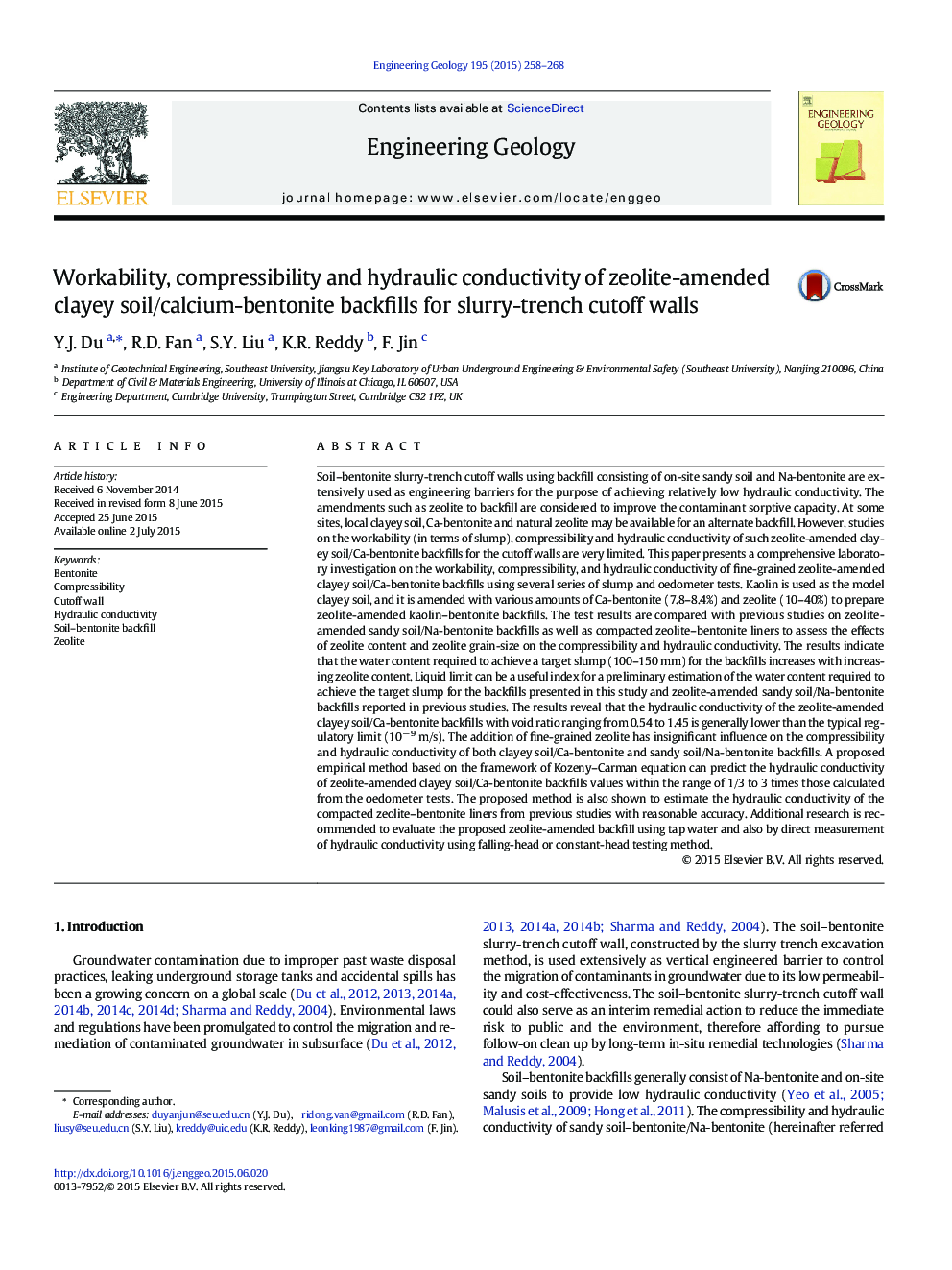| کد مقاله | کد نشریه | سال انتشار | مقاله انگلیسی | نسخه تمام متن |
|---|---|---|---|---|
| 4743301 | 1641790 | 2015 | 11 صفحه PDF | دانلود رایگان |
• Liquid limit can be used to preliminarily estimate workability.
• Bentonite content critically controls compressibility and hydraulic conductivity.
• Addition of fine-grained zeolite insignificantly affects hydraulic conductivity.
• Empirical method well predicts hydraulic conductivity.
Soil–bentonite slurry-trench cutoff walls using backfill consisting of on-site sandy soil and Na-bentonite are extensively used as engineering barriers for the purpose of achieving relatively low hydraulic conductivity. The amendments such as zeolite to backfill are considered to improve the contaminant sorptive capacity. At some sites, local clayey soil, Ca-bentonite and natural zeolite may be available for an alternate backfill. However, studies on the workability (in terms of slump), compressibility and hydraulic conductivity of such zeolite-amended clayey soil/Ca-bentonite backfills for the cutoff walls are very limited. This paper presents a comprehensive laboratory investigation on the workability, compressibility, and hydraulic conductivity of fine-grained zeolite-amended clayey soil/Ca-bentonite backfills using several series of slump and oedometer tests. Kaolin is used as the model clayey soil, and it is amended with various amounts of Ca-bentonite (7.8–8.4%) and zeolite (10–40%) to prepare zeolite-amended kaolin–bentonite backfills. The test results are compared with previous studies on zeolite-amended sandy soil/Na-bentonite backfills as well as compacted zeolite–bentonite liners to assess the effects of zeolite content and zeolite grain-size on the compressibility and hydraulic conductivity. The results indicate that the water content required to achieve a target slump (100–150 mm) for the backfills increases with increasing zeolite content. Liquid limit can be a useful index for a preliminary estimation of the water content required to achieve the target slump for the backfills presented in this study and zeolite-amended sandy soil/Na-bentonite backfills reported in previous studies. The results reveal that the hydraulic conductivity of the zeolite-amended clayey soil/Ca-bentonite backfills with void ratio ranging from 0.54 to 1.45 is generally lower than the typical regulatory limit (10− 9 m/s). The addition of fine-grained zeolite has insignificant influence on the compressibility and hydraulic conductivity of both clayey soil/Ca-bentonite and sandy soil/Na-bentonite backfills. A proposed empirical method based on the framework of Kozeny–Carman equation can predict the hydraulic conductivity of zeolite-amended clayey soil/Ca-bentonite backfills values within the range of 1/3 to 3 times those calculated from the oedometer tests. The proposed method is also shown to estimate the hydraulic conductivity of the compacted zeolite–bentonite liners from previous studies with reasonable accuracy. Additional research is recommended to evaluate the proposed zeolite-amended backfill using tap water and also by direct measurement of hydraulic conductivity using falling-head or constant-head testing method.
Journal: Engineering Geology - Volume 195, 10 September 2015, Pages 258–268
